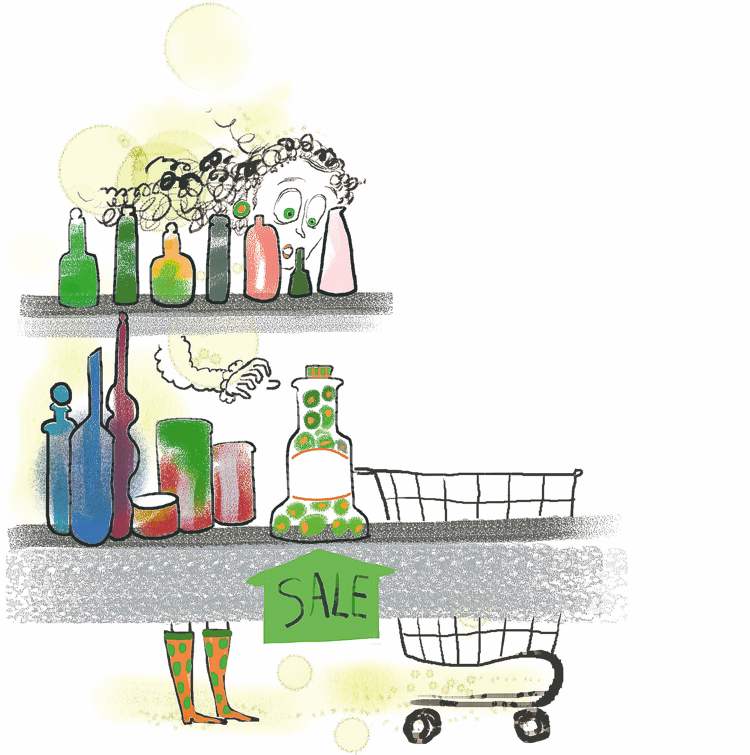‘Best before’ — is it a dire warning, or a suggestion?
Advertisement
Read this article for free:
or
Already have an account? Log in here »
To continue reading, please subscribe:
Monthly Digital Subscription
$1 per week for 24 weeks*
- Enjoy unlimited reading on winnipegfreepress.com
- Read the E-Edition, our digital replica newspaper
- Access News Break, our award-winning app
- Play interactive puzzles
*Billed as $4.00 plus GST every four weeks. After 24 weeks, price increases to the regular rate of $19.00 plus GST every four weeks. Offer available to new and qualified returning subscribers only. Cancel any time.
Monthly Digital Subscription
$4.75/week*
- Enjoy unlimited reading on winnipegfreepress.com
- Read the E-Edition, our digital replica newspaper
- Access News Break, our award-winning app
- Play interactive puzzles
*Billed as $19 plus GST every four weeks. Cancel any time.
To continue reading, please subscribe:
Add Free Press access to your Brandon Sun subscription for only an additional
$1 for the first 4 weeks*
*Your next subscription payment will increase by $1.00 and you will be charged $16.99 plus GST for four weeks. After four weeks, your payment will increase to $23.99 plus GST every four weeks.
Read unlimited articles for free today:
or
Already have an account? Log in here »
Hey there, time traveller!
This article was published 25/02/2012 (4992 days ago), so information in it may no longer be current.
When in doubt, toss it out — or toss it back?
If you’re the sort of person who throws away that tub of yogurt or can of soup the day after its “best before” date passes, you’re not alone.
Confusion over what to make of shelf-life labels has long plagued shoppers, many of whom may be unaware the term “best before” doesn’t refer to how safe a food is to eat.

That uncertainty, along with store policies on food that’s outdated (past its best before date), can lead to trash bins full of grocery items that might still be perfectly safe to eat — part of the 40 to 50 per cent of the Winnipeg household waste stream that consists of food.
A “best before” date refers to a food’s “durable life:” how long it will keep its taste, nutritional value and wholesomeness when stored under the right conditions. “Best before” and “packaged on” dates are not indicators of food safety, “neither before nor after the date,” according to the Canadian Food Inspection Agency (CFIA).
“You can sell, buy and eat foods after the best before date has passed,” a CFIA spokesman said in a written statement. “However, the food may lose some of its freshness and flavour, or its texture may have changed. Some of its nutritional value may also be lost.”
Not a ringing endorsement, but not a call for extreme measures on outdated goods, either. But the backlash and confusion persist. Consumers are often leery about eating food that’s past the best before date, and it’s rare to see them on Winnipeg store shelves.
Adding to the uncertainty, best before dates apply only to unopened products. Once you’ve cracked the lid, the shelf life of foods can change, the CFIA says.
And although some shoppers swear by the smell test, the agency is firmly against it.
You might expect Manitoba’s food inspectors to pay close attention to those dates, but that’s not always the case. A provincial spokeswoman said inspectors are concerned most about food safety, not quality, and look for things like spoilage, bulging cans or mould. They aren’t necessarily related to the best-before date, she said.
Confusion over food labelling has caught the attention of one advocacy group. The fledgling Food Label Movement is petitioning the federal government for clearer food labelling. One of the issues they hope to focus on involves best before dates.
“I just find it really fascinating, the fact that we have this (best) before date on the label, and no one really knows what it means,” said executive director Sagan Morrow.
“I think it’s just one more way to realize that the label can be really misleading… one of those ways that food manufacturers are getting consumers to buy more and more products.”
In the United States, outdated food can be found on the shelves of certain grocers: known as salvage grocery stores, they sell food deemed unsellable by regular supermarkets and stores, often at steeply discounted prices.
One store owner profiled on The Atlantic magazine’s website said shoppers were initially wary, but business had picked up substantially: “We have about 100 customers every day and 150 on the weekend,” said Patricia Quillen, owner of Country Discount Grocery in Wisconsin.
You may find outdated or soon-to-be-outdated food on the shelves of some Winnipeg stores, but it tends to be the exception, not the rule. Some chains, such as Canada Safeway, won’t sell anything that’s past its best before date, or pass it on to other distributors.
That’s not to say the food always goes to waste: Safeway spokesman John Graham said bakery items getting close to their best before dates are given to food banks such as Winnipeg Harvest. Produce and floral items that are outdated or simply not in good enough condition to sell get tossed — into a compost pile, fortunately, rather than the trash.
Graham said due to high inventory turnover and a sophisticated ordering system, outdated food isn’t often an issue. But anything that does wind up outdated gets thrown away, not sold.

“You can sell a product up to its best before date, but most customers are selective… they’re looking for the product that has the longest expiry date,” he said.
Winnipeg Harvest executive director David Northcott said Harvest often gets food donated by major grocers, including Costco, Safeway and Co-op stores. He said the food bank is able to use 90 per cent of what’s donated, but makes a point of removing anything past the best before date.
“There’s a real grey area in the science,” he said.
“We’ve never seen published research data that tells us what exactly happens past the due date.”
Northcott said he’d welcome clearer labelling in regard to food safety, saying it would help citizens make more informed choices.
“Everybody wins when we do that,” he said.
lindsey.wiebe@freepress.mb.ca
Glossary:
— Durable life: the anticipated amount of time that an unopened food product, when stored under appropriate conditions, will retain its freshness, taste, nutritional value or any other qualities claimed by the manufacturer.
— Best-before date: also known as a “durable-life date,” tells you when the period of durable life ends. “Best before” dates must appear on pre-packaged foods that will keep fresh for 90 days or less. These dates do not guarantee product safety, but do provide information about freshness and potential shelf-life.
— Expiraton date: must be used on certain products, including meal replacements, nutritional supplements and baby formula. Food should not be eaten after an expiration date has passed. After this date, it may not have the same nutrient content as the label says.
— “Use by” date: you’ll see this only on prepackaged fresh yeast, as a replacement for the “best before” label.
— Canadian Food Inspection Agency

